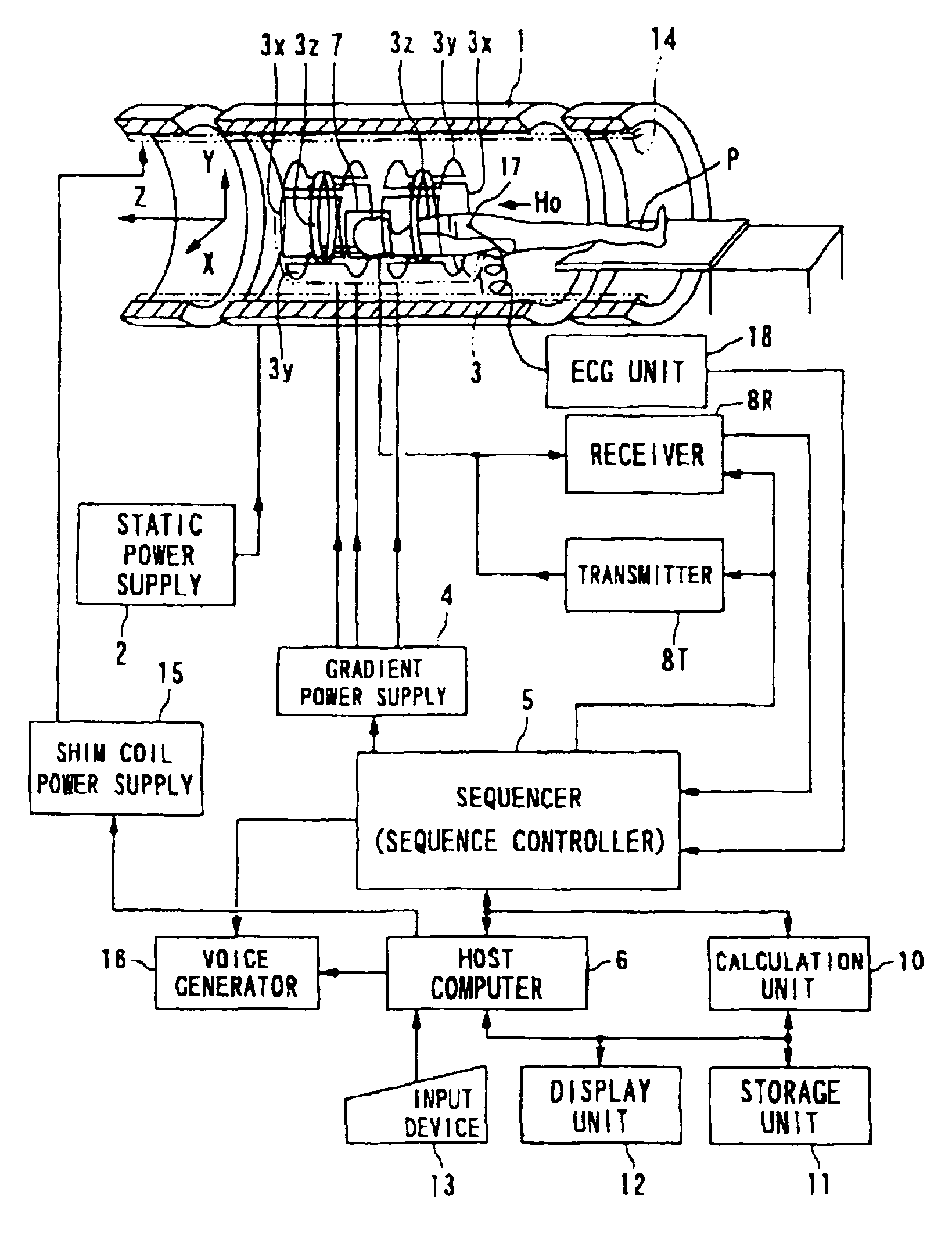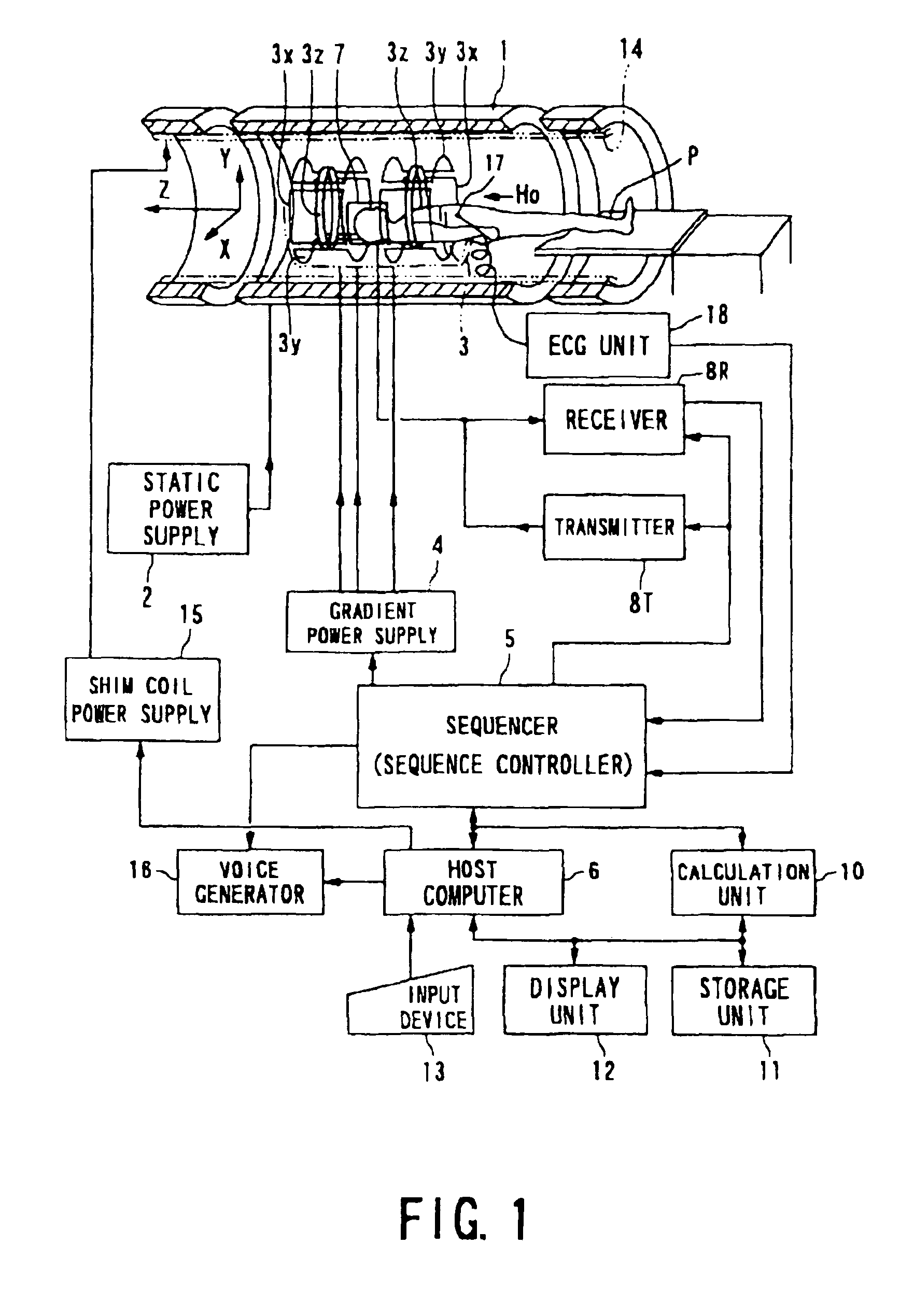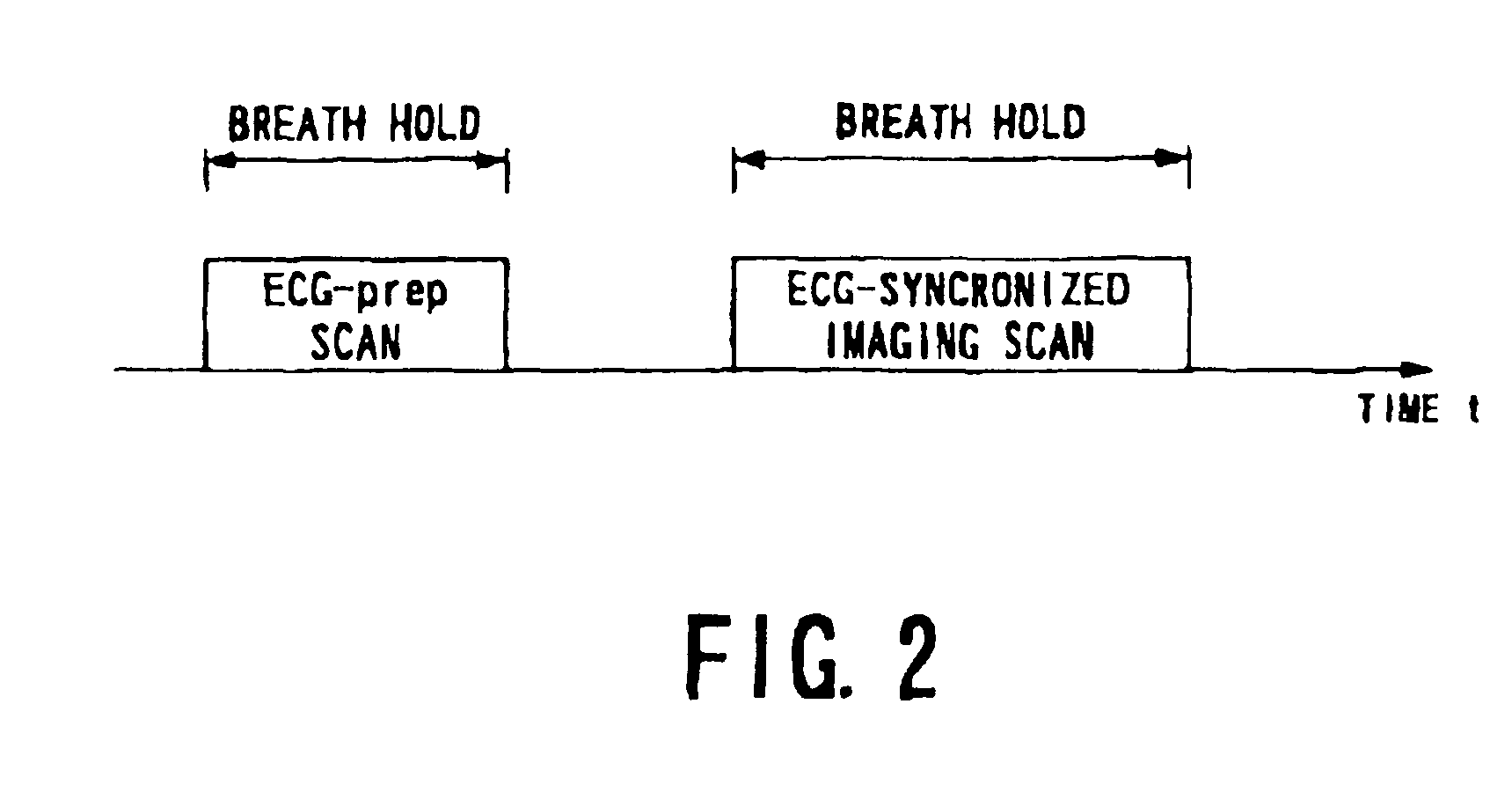MRI system and MR imaging method
a magnetic resonance imaging and imaging method technology, applied in the field of magnetic resonance imaging, can solve the problems of inability to inject contrast medium into patients, high patient mental and physical burden, and high examination cost of contrast mr angiography
- Summary
- Abstract
- Description
- Claims
- Application Information
AI Technical Summary
Benefits of technology
Problems solved by technology
Method used
Image
Examples
first embodiment
[0053](1) First Embodiment
[0054]Refereeing to FIGS. 1 to 14, a first embodiment will now be described.
[0055](1.1) Configuration of System
[0056]FIG. 1 shows an outlined hardware configuration of an MRI (magnetic resonance imaging) system used in common in each of the following embodiments.
[0057]The MRI system comprises a patient couch on which a patient P lies down, static magnetic field generating components for generating a static magnetic field, magnetic field gradient generating components for appending positional information to a static magnetic field, transmitting / receiving components for transmitting and receiving radio-frequency signals, control and operation components responsible for controlling the whole system and reconstructing images, and electrocardiogram components for acquiring an ECG signal of a patient, the ECG signal being employed as a signal indicative of cardiac time phases of the patient.
[0058]The static magnetic field generating components include a magnet 1 ...
second embodiment
[0139](2) Second Embodiment
[0140]Referring to the foregoing drawings and FIGS. 15 to 22, a second embodiment of the present invention will now be described.
[0141]MR imaging according to the second embodiment is characterized in that a dephasing or rephasing pulse is added to the read-out gradient pulse GR in order to depict slow-speed blood flow such as blood flow in the inferior limb. The present embodiment uses an MRI system that is the same or identical in both hardware configuration and ECG-prep scan as or to those in the first embodiment.
[0142](2.1) Imaging Scan
[0143]In the present embodiment, as shown in FIG. 15, the ECG-prep scan is followed by two times of imaging scans each performed on the ECG-synchronized technique by which the two synchronization timings are used, respectively.
[0144]Referring to FIGS. 16 to 20, operations of the imaging scans of two times (namely, imaging of two times) will now be described. The host computer 6 executes a not-shown given main program, du...
third embodiment
[0197](Third Embodiment)
[0198]Referring to the foregoing figures and FIGS. 24 to 26, a third embodiment of the present invention will now be described. An MRI system used in this embodiment is configured in hardware in the same or similar way as or to the first and second embodiments.
[0199]In the third embodiment, the first-time and two-time imaging scans, that is, two times of imaging scans which have been conducted in the second embodiment are conducted as one-time imaging scan. In this scan, the foregoing dephasing and rephasing pulses are used according to the systole and diastole in each cardiac cycle.
[0200]The artery and vein in the inferior limb will now be employed as fluid of a slower speed and an artery / vein visually separated image thereof will now be obtained. Similarly to the sequence shown in FIG. 2, the ECG-prep scan is first performed, and then a one-time imaging scan is performed using the ECG-synchronized technique. The ECG-prep scan is conducted as described in th...
PUM
 Login to View More
Login to View More Abstract
Description
Claims
Application Information
 Login to View More
Login to View More - R&D
- Intellectual Property
- Life Sciences
- Materials
- Tech Scout
- Unparalleled Data Quality
- Higher Quality Content
- 60% Fewer Hallucinations
Browse by: Latest US Patents, China's latest patents, Technical Efficacy Thesaurus, Application Domain, Technology Topic, Popular Technical Reports.
© 2025 PatSnap. All rights reserved.Legal|Privacy policy|Modern Slavery Act Transparency Statement|Sitemap|About US| Contact US: help@patsnap.com



